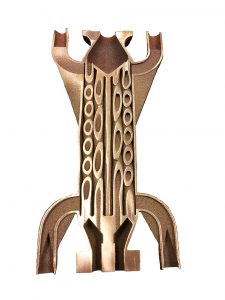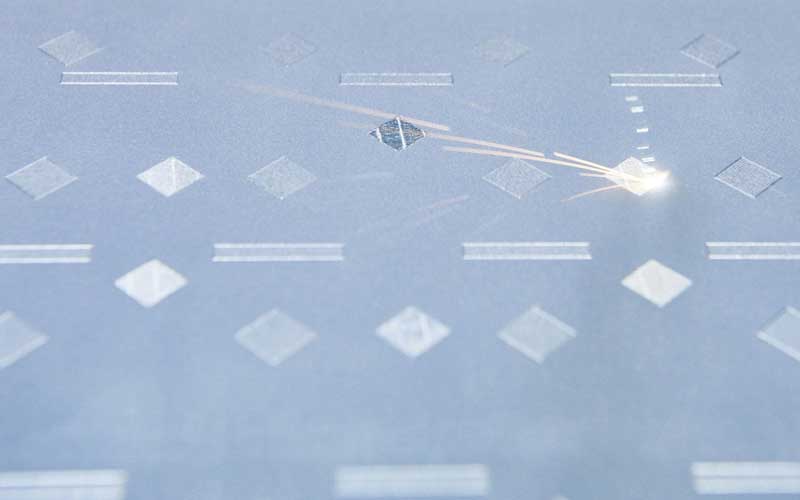The new additive copper from Stratasys Direct Manufacturing is a heat-stable material that is perfect for thermal management applications.
Stratasys Direct Manufacturing, the parts-on-demand division of Stratasys, has just introduced additive copper (C18150). This new chromium zirconium copper (CuCr1Zr) alloy will provide enhanced benefits for professional 3D printing, particularly with better thermal and electrical conductivity.
Stratasys says that the additive copper was created to meet the growing demand in the additive manufacturing market for a copper material that was more stable up to 700°F, as well as age hardenable.
In a blog post, the company states:
“Additively manufacturing parts in copper opens new doors for engineers creating novel geometries for thermal management systems. Improving functionality and heat transfer, provides unparalleled geometric freedom with the same thermal conductivity afforded from copper.”
In refining the production of its C18150, the company has been collaborating with aerospace companies to optimize the mechanical properties of the material. The new additive copper has been subject to testing within thermal transfer applications to confirm and validate performance and quality. Indeed, Stratasys Direct Manufacturing spent months validating the material. making sure that it would be produce parts with accuracy and reliability.

Stratasys Direct Manufacturing Launches C18150 Metal 3D Printing Material
Now that C18150 is coming to market, the company believes that the new material will be ideal for thermal management applications. The additive copper will be especially useful in the energy and transportation industries.
Aside from the obvious benefits of the material such as time efficiency and cost reduction, it offers design freedom that allows for the inclusion of non-linear and tapered geometries as part of structures such as fins, vane blades, capillary wicking structures, heat pipes and conformal internal passages.
Within the additive manufacturing space, designers will also benefit from the weight and space saving properties of C18150. To ensure a better finish for fluid flow applications, Stratasys also provides post-processing support for DMLS parts such as heat treatments and densification.
Stratasys has been using the additive copper with its Direct Metal Laser Sintering (DMLS) technology to print curved heat pipes for space applications and small satellites, but also lattice structures that are being used for thermal shielding.
However, for engineers looking to additively manufacture using the copper, there are still some important design elements to consider.
For example, wall thickness and feature details must be considered when designing with DMLS technology. In addition, support structures may need to be designed for complex internal passages. When it comes to heat exchangers, Stratasys says that thinner walls are better at limits of around 1000 micrometers of 0.040.
In a year where metal 3D printing is all the rage, Stratasys is getting involved with a professional material with can stand the heat.

Source: Stratasys
License: The text of "Stratasys Direct Manufacturing Tackles Thermal Applications With Additive Copper" by All3DP is licensed under a Creative Commons Attribution 4.0 International License.